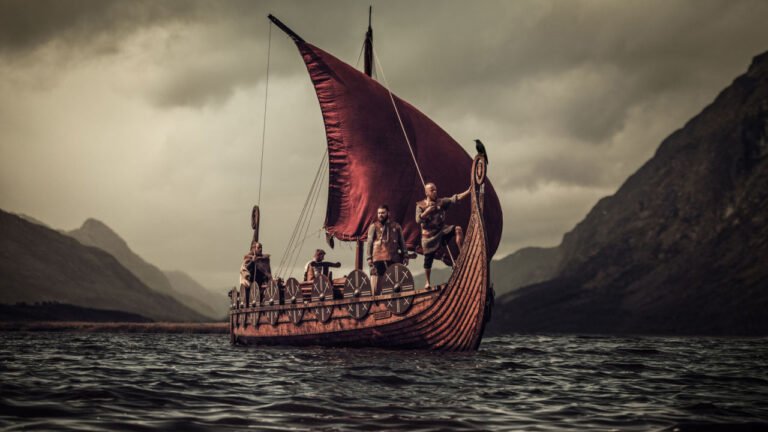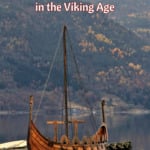New research shows that not only did the Viking Era see Norse people settle across Europe, plenty of people moved the other way too. In fact, more people moved into Scandinavia in Viking times than at any other time period analysed in the study.
We often think of the Vikings as ultimate explorers, taking their culture with them to far-off lands. But we may not typically think of Viking age Scandinavia as a hub for migration from all over Europe.

This story is written by Professor Anders Götherström and Ricardo Rodriguez Varela from the Department of Archaeology and Classical Studies at Stockholm University. It was first published by The Conversation and is republished here with kind permission.
In a study published in Cell, we show this is exactly what happened. The Viking period (late 8th century to mid 11th century) was the catalyst for an exceptional inflow of people into Scandinavia. These movements were greater than for any other period we analysed.
DNA Ancestry Tests: Discover clues about your own heritage with a DNA ancestry test. Order now: US Residents – UK Residents – International
What’s also striking is that later Scandinavians don’t show the same high levels of non-local ancestry present in their Viking-era counterparts. We don’t completely understand why the migrants’ genetic impact was reduced in later Scandinavians, but there are some possibilities.
About the DNA study
We analysed genomes (the full complement of DNA contained in human cells) from around 17,000 Scandinavian individuals, including nearly 300 from ancient burials. We combined existing datasets with new samples. These were analysed together in a dataset spanning 2,000 years.
We used these genomes to explore when people arrived in the region from outside and where they came from. New DNA samples were collected from several iconic Swedish archaeological sites.
These included Sandby borg, which is a “ring fortress” where a massacre occurred just before 500 AD, and the Vendel cemetery, which features several burials contained in large boats and dating to between the 6th and 8th centuries AD. We also used samples from Viking chamber burials and remains from Kronan, a warship that capsized with more than 800 men in 1676.
Migration to all of Scandinavia
Two previous studies noted extensive migration into Scandinavia during the Viking age. But in our latest study, we have clarified some of the details about this flow of genes into the region.
We found that movements of people from western Europe impacted all of Scandinavia, while migration from the east was more localised, with peaks in the Lake Mälaren Valley and Gotland. Finally, gene flow from southern Europe largely affected the south of Scandinavia.

Since the study was based on a 2,000-year chronology, it was not only possible to see there was an increase in migration during the Viking era, but also that it starts to fall with the onset of the medieval period.
The non-local ancestry that arrives in the region at this time falls away in later periods. Much of the genetic influence from eastern Europe disappears and the western and southern influence becomes significantly diluted.
Temporary migration?
The best way to explain this is that people who arrived in Scandinavia during Viking times did not have as many children as the people who were already living there.
There are different possible reasons for this. The migrants could have belonged to groups that did not intend to settle down in Scandinavia, instead aiming to return to where they came from. Tradespeople and diplomats are examples in this category.
Additionally, the migrants could also have belonged to groups that were not allowed to have families or children, such as slaves and priests.
Uralic ancestry
We also looked at influences that began at earlier periods in time. For example, the DNA of modern Scandinavians changes gradually as you travel from north to south. This genetic “cline”, or gradient, is due to migrations into the region of people carrying shared genetic similarities known as the Uralic component.
Modern examples of where the Uralic genetic component can be found are among Sami people, people in modern Finland, some Native Americans and some central Asian groups.
In our dataset, we found occasional instances of people with Uralic ancestry – mainly in northern Scandinavia – during the Viking period and medieval times. But the Uralic influence seems to increase after this time, since individuals from our 17th century sample have similar levels of this ancestry to people living today.
Prestigious burials for migrants
There were many other fascinating stories from our study. For example, at the Viking age burial site of Sala, by the river Sagån, we find a woman that seems to be fully British or Irish in her genomic composition.
This woman was buried in a prestigious Viking period boat burial. We don’t know exactly what position she held in society, but she would not have been a slave or a priest.
Among the individuals found on the wreck of the Kronan, there were two people who came from what is now Finland and another who has a genetic affinity with people from the Baltic states, such as Lithuania and Latvia (though this identification is not conclusive).
At the time of the Kronan incident in 1676, these areas were part of the Swedish Empire, though they are independent today.
DNA Ancestry Tests: Discover clues about your own heritage with a DNA ancestry test. Order now: US Residents – UK Residents – International
The work sheds more light on the historical events that shaped the populations of Scandinavia over time. The Viking age was marked by Scandinavians’ curiosity of the world outside their home region.
But, from our results, it also appears that the world outside this region was curious enough about the Vikings to travel to Scandinavia.
This story is written by Professor Anders Götherström and Ricardo Rodriguez Varela from the Department of Archaeology and Classical Studies at Stockholm University. It was first published by The Conversation and is republished here with kind permission.


